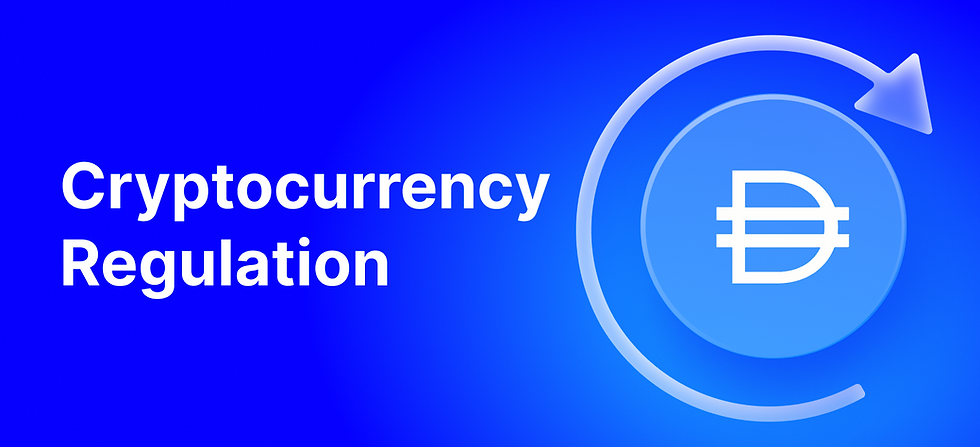The Impact of Regulatory Changes on Crypto Markets in 2025
- Bitcoinsguide.org

- Jun 4
- 3 min read
1. Strengthening of Regulatory Frameworks Worldwide
One of the key developments in 2025 is the broadening of regulatory frameworks that aim to provide clarity and security for crypto market participants.
This means crypto exchanges, wallets, and projects will face stricter compliance rules regarding anti-money laundering (AML), know-your-customer (KYC) practices, and data privacy.
United States: The Crypto Consumer Protection Act has come into full effect, allowing the SEC (Securities and Exchange Commission) and CFTC (Commodity Futures Trading Commission) to oversee cryptocurrencies more effectively.
Increased registration requirements for exchanges and a crack down on unregistered securities are expected to impact smaller platforms.
European Union: With the final rollout of MiCA (Markets in Crypto-Assets Regulation), the EU aims to create a more harmonized market for cryptocurrencies, preventing fraud while making sure that crypto projects and exchanges comply with the same standards across member states.
Asia: While Singapore and Japan continue to support crypto innovation with progressive regulations, countries like China maintain a more restrictive stance, focusing on their own central bank digital currency (CBDC) rather than decentralized crypto networks.

How will Regulations affect crypto?
2. Effects on Market Liquidity and Volatility
As crypto exchanges and projects become subject to clearer regulatory requirements, market liquidity could see a boost in the long term.
The arrival of institutional investors — who are currently cautious due to regulatory uncertainty — is expected to grow significantly.
With more institutional capital entering the space, crypto assets may become less volatile, stabilizing prices and improving investor confidence.
However, the transition period could see a temporary spike in volatility.
Smaller, unregulated platforms may struggle to comply with new rules, leading to potential market shifts or short-term liquidity issues as platforms face regulatory audits and changes.
3. Increased Investor Protection
Investor protection is a central aspect of new regulatory changes.
The focus is on ensuring that scams, rug pulls, and market manipulation become harder to execute.
With tighter enforcement of KYC and AML standards, exchanges are becoming more accountable for safeguarding user assets.
Transparency: Blockchain audits, regular financial disclosures, and mandatory reporting are expected to become standard practices.
Safer Transactions: As a result of these regulations, scams and illegal trading activities should decrease, and legitimate projects will gain more credibility, attracting long-term investors.
4. Impact on Innovation and DeFi
While regulations may create a more secure environment, they could also stifle some of the innovation seen in decentralized finance (DeFi) and other blockchain-based applications.
Developers might face challenges when building decentralized platforms that align with compliance standards.
However, it’s not all negative for DeFi. Projects that embrace regulatory changes, such as implementing proper KYC procedures or auditing smart contracts, will be better positioned to gain institutional interest and mainstream adoption.
The shift towards regulated decentralized finance (DeFi) could lead to the emergence of hybrid models where decentralization and regulation coexist, enabling wider adoption of DeFi products without compromising on safety.
5. Global Regulatory Coordination
A key theme in 2025 is the global push for regulatory coordination.
Cryptocurrency is inherently borderless, and regulators are realizing that fragmented national regulations can cause uncertainty and inefficiency in global markets.
Efforts like the Financial Action Task Force (FATF) guidelines and international agreements aim to establish more uniform standards for crypto operations worldwide.
This will make it easier for investors and businesses to operate across borders while reducing the risk of falling into regulatory loopholes.

6. Final Thoughts: Navigating the New Regulatory Era
2025 will be a landmark year for cryptocurrency markets as regulations continue to evolve, providing both challenges and opportunities.
While regulations will bring more stability and investor protection, they will also require market participants to adapt to new compliance standards.
For investors, the key will be to stay informed about changes in regulations, ensure they are engaging with legitimate platforms, and use tools to protect themselves from fraud.
For the industry, innovation will remain important, but it must evolve in tandem with regulatory frameworks to thrive in a compliant, secure environment.



Comments